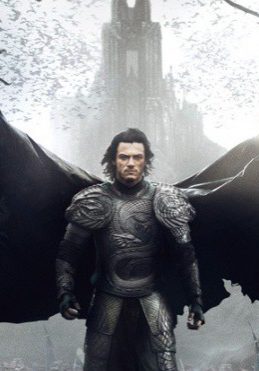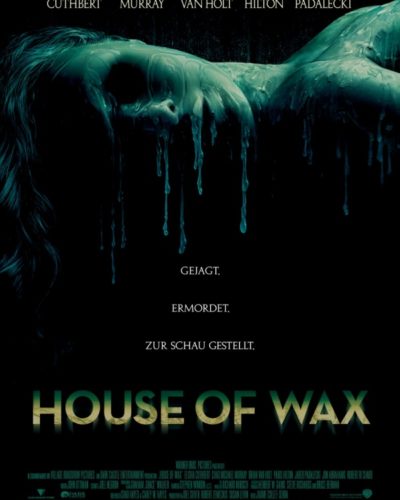A Tale of Blood and Shadow: The Review of Dracula Untold
“Men do not fear swords, they fear monsters.”
Enshrouded in the ominous darkness of both folklore and history, ‘Dracula Untold’ (2014) navigates the mythos of the man who would become the legendary vampire. Directed by Gary Shore in a bold cinematic debut, this iteration is an origin story that merges historical drama with gothic horror. Our protagonist, Vlad the Impaler (Luke Evans), is portrayed as a tormented prince desperate to protect his kingdom and family from the Ottoman onslaught. In a twist of fate, or perhaps destiny, he turns to supernatural forces, thus beginning his descent into the darkness that will redefine his legacy. But does this film rise to the occasion, delivering a fresh narrative to an oversaturated genre, or does it merely flap about in the shadows of its predecessors? Let’s sink our teeth into the heart of ‘Dracula Untold’.
Shadows and Whispers: Crafting the Macabre Mood
The ambiance of ‘Dracula Untold’ acts as the backbone of its horror, with a relentless overcast sky and a brooding landscape that mirrors Vlad’s inner turmoil. Flickers in the candlelight and the eerie quietude set the stage for suspense, while grand set pieces provide a canvas for the ensuing dread. Shore attempts to instill fear not through gore but with the anticipation of the inevitable, using Vlad’s transformation as the pivotal locus of terror.
However, it’s in the execution that the film sometimes falters. The reliance on CGI lacks the visceral tangibility that often makes horror so affecting. While digital effects bring to life the sheer scale of Vlad’s powers and the monstrous entities that lurk in the dark, it detaches the audience, lessening the impact of would-be harrowing scenes. The balance between real and digital, tangible and fantastic, is precarious and oftentimes tips into the realm of visual spectacle over spine-chilling cinema.
Still, there is finesse in the cinematography, with dramatic use of chiaroscuro and a controlled color palette that envelops you in the world’s crepuscular gloom. The camera work is articulate, capturing scenes with a precision that accentuates the narrative’s darker elements. Special attention to sound design – whispers on the wind, the fluttering of bat wings, and the clash of steel – effectively heightens the tension. Silent moments, inversely, amplify the thriller aspect, leaving audiences hanging on the edge of their seats.
Heartbeat in the Darkness: Characters and Performance
As the titular character, Luke Evans delivers a performance drenched in both nobility and anguish, serving as the linchpin to the film’s emotional weight. Evans walks a tightrope, balancing humanity with burgeoning monstrosity, and does so with remarkable conviction. However, the secondary characters suffer from lackluster development, so often the pitfall of character-driven horror tales, leaving the audience somewhat disengaged from their fates.
Despite this, the ensemble of actors adhere rigorously to the film’s chilling tone, though none stand out as particularly memorable, aside from Evans himself. The characters feel like phantoms in Vlad’s shadowy world – seen, but not wholly substantial.
Reflections in the Blood: Themes and Impact
‘Dracula Untold’ digs its claws into the essence of vampiric horror but attempts to humanize its central monster. It teeters between psychological introspection and supernatural chills, ultimately leaning into the latter. The horror mechanics deployed rely heavily on the transformative and primal fear of losing oneself to darkness, reflective in the character’s journey rather than the reliance on jump scares or gratuitous violence.
What the film perhaps surprisingly accomplishes is the discussion of power’s cost and the horrors of war. Vlad’s transformation is metaphorical of the extreme measures one might take against seemingly insurmountable odds—an allegory for the thirst for power and its ultimate consequences.
For dedicated horror aficionados, ‘Dracula Untold’ might not deliver a new pinnacle of terror. It is neither groundbreaking nor relentlessly terrifying, yet it isn’t without merit. It’s an accessible entry to those less versed in the genre, and to those intrigued by the Dracula mythos, offering a different angle to the well-trod story. It might not keep you awake at night in fear, but it could provoke a contemplation of the shadows within ourselves and the history from which legends emerge.
Final Verdict: Into the Night
The strengths of ‘Dracula Untold’ rest in its atmospheric visuals and Evans’ captivating performance, while its weaknesses lie in character development and occasionally overbearing CGI reliance. It is an enjoyable if not exceptional, addition to the horror genre that provides a unique lens on an iconic figure.
This movie might not cater to those seeking the gut-wrenching terror of horror’s purest form or detailed historical accuracy. Nevertheless, for those curious to witness the uneasy blend of history and myth, ‘Dracula Untold’ offers a cinematic experience draped in the rich velvet of gothic storytelling—worth a watch for the curious and fans of dark fantasy.
Cautions for graphic violence and darker themes are warranted, as they are integral to the film’s nature. In the end, ‘Dracula Untold’ stands as a testament to the enduring allure of the Prince of Darkness and the ever-evolving genre that seeks to capture the essence of what truly horrifies us.




